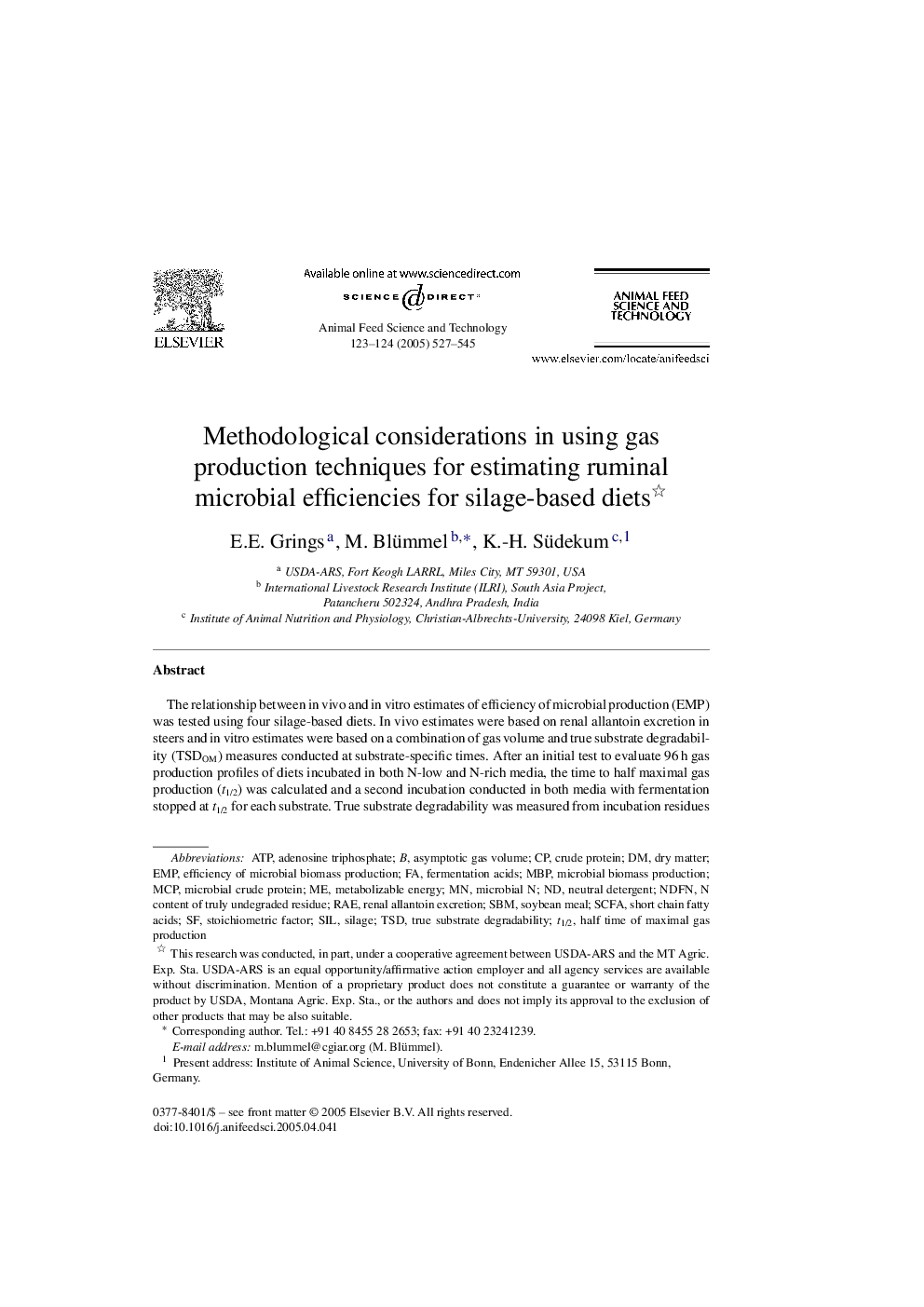| کد مقاله | کد نشریه | سال انتشار | مقاله انگلیسی | نسخه تمام متن |
|---|---|---|---|---|
| 9916635 | 1552507 | 2005 | 19 صفحه PDF | دانلود رایگان |
عنوان انگلیسی مقاله ISI
Methodological considerations in using gas production techniques for estimating ruminal microbial efficiencies for silage-based diets
دانلود مقاله + سفارش ترجمه
دانلود مقاله ISI انگلیسی
رایگان برای ایرانیان
کلمات کلیدی
SBMTSDSCFAMCPMBPEMPRAEt1/2 - t1 / 2Adenosine Triphosphate - آدنوزین تری فسفاتATP - آدنوزین تری فسفات یا ATPShort chain fatty acids - اسیدهای چرب پایه کوتاهMetabolizable energy - انرژی متابولیزه شدهMicrobial efficiency - بازده میکروبیIn vitro gas production - تولید گاز درون آزمایشگاهیSil - سیلSilage - سیلوdry matter - ماده خشکneutral detergent - مواد شوینده خنثیMicrobial N - میکروبی Ncrude protein - پروتئین خامmicrobial crude protein - پروتئین خام تولیدی میکروبیSoybean meal - کنجاله سویاCattle - گاو
موضوعات مرتبط
علوم زیستی و بیوفناوری
علوم کشاورزی و بیولوژیک
علوم دامی و جانورشناسی
پیش نمایش صفحه اول مقاله

چکیده انگلیسی
The relationship between in vivo and in vitro estimates of efficiency of microbial production (EMP) was tested using four silage-based diets. In vivo estimates were based on renal allantoin excretion in steers and in vitro estimates were based on a combination of gas volume and true substrate degradability (TSDOM) measures conducted at substrate-specific times. After an initial test to evaluate 96Â h gas production profiles of diets incubated in both N-low and N-rich media, the time to half maximal gas production (t1/2) was calculated and a second incubation conducted in both media with fermentation stopped at t1/2 for each substrate. True substrate degradability was measured from incubation residues and combined with gas volumes to estimate EMP. Additionally, microbial N (MN) production estimates were made using two equations from information on dietary N, N content of residues and NH3-N content of media before and after incubation. In vitro estimates of EMP were related to in vivo EMP in both N-low (R2Â =Â 0.94, P=0.03) and N-rich (R2Â =Â 0.91, P=0.04) incubation media. No relationships occurred between in vitro efficiency of microbial N production and in vivo EMP when microbial N production was calculated from direct N determinations using N content of the apparently degraded residue after centrifugation and NDFN of the incubation residue. When in vitro microbial N production was estimated indirectly by accounting for dietary N, changes in NH3-N concentrations in the incubation medium and NDFN in the incubation residue, efficiency of microbial N production relative to 100Â mg TSDOM tended (R2Â =Â 0.83, P=0.09) to be positively related to in vivo EMP. Silage fermentation acids appeared to interfere with relationships between gas production and in vitro substrate degradability measures because they were removed from the incubation residue without having contributed to fermentation. Therefore, silage acids should be accounted for when using combined in vitro gas production and true substrate degradability estimates to evaluate EMP of silage-based diets. N supplementation of incubation medium can influence substrate use for microbial growth, and attempts should be made to simulate in vivo N availability. It may be possible to rank silage-based diets for microbial efficiency using combined gas volume and true substrate degradability measures conducted at substrate-specific times (t1/2).
ناشر
Database: Elsevier - ScienceDirect (ساینس دایرکت)
Journal: Animal Feed Science and Technology - Volumes 123â124, Part 1, 30 September 2005, Pages 527-545
Journal: Animal Feed Science and Technology - Volumes 123â124, Part 1, 30 September 2005, Pages 527-545
نویسندگان
E.E. Grings, M. Blümmel, K.-H. Südekum,